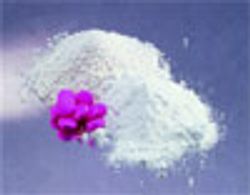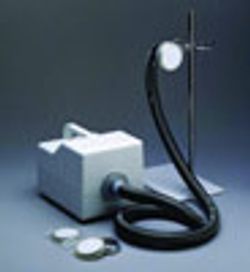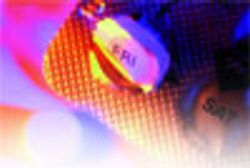Uniformity of Bioprocessing Equipment Manufacturing
Pharmaceutical Technology Europe
The American Society of Mechanical Engineers' Council on Codes and Standards established an ad hoc committee to examine whether a standard to create uniformity and consistency in the bioprocessing industry is needed. This article describes the goals and current activities of the standards committee and its subcommittees.
The American Society of Mechanical Engineers' Council on Codes and Standards established an ad hoc committee to examine whether a standard to create uniformity and consistency in the bioprocessing industry is needed. This article describes the goals and current activities of the standards committee and its subcommittees.
On 20 June 1989, the American Society of Mechanical Engineers' (ASME) Council on Codes and Standards issued a directive to the Board on Pressure Technology Codes and Standards to form an ad hoc committee to investigate and catalogue the biopharmaceutical industry's concerns about inconsistencies. Thus, the Bioprocessing Equipment (BPE) Standards Committee was formed and immediately met to establish a path forward. The committee, consisting of end-users, equipment manufacturers or suppliers, drug manufacturers, distributors and engineers, met in New York City at the ASME headquarters to discuss the need for a standard that could bring clarity and consistency to the bioprocessing industry and end miscommunications, misunderstandings, misinterpretations and ambiguities in the applicable entities.
It was agreed that the six parts of the new standard would be identified by the following titles and subcommittee designations:
- General requirements
- Design for sterility and cleaning
- Dimensions and tolerances for stainless steel automatic welding and hygienic clamp tube fittings
- Material joining
- Stainless steel and higher alloy interior surface finishes
- Equipment seals.
The first edition of the ASME BPE standard was issued on 17 October 1997, followed by a second edition in 2002. The standard gives the industry a level playing field for the sector's engineers, manufacturers and end-users. It addresses the needs of those who purchase, specify and manufacture biopharmaceutical production equipment. The standard also provides a method of ensuring that the design, production and installation of bioprocessing equipment, tubing, fittings and components are consistent and uniform.
The number of subcommittees has recently increased from the original six to 10, with the addition of the European, Polymers and Elastomers, Accreditation, and Metallic Materials of Construction subcommittees. What follows is an update regarding their current activities and a look ahead at their future challenges.
Subcommittees
General Requirements.
This subcommittee is developing a list of documentation that may be included in a turnover package. Contractors and owners will be able to review this list and decide which documents are needed.
Design for Sterility and Cleaning. The focus of this subcommittee is both clean-in-place and pure-water systems. Its goal is to record and depict solid designs that are agreed upon by the industry. The basics will be covered in the 2005 edition of the standard.
Dimensions and Tolerances. Subcommittee members are reviewing the standardization of face dimensions of hygienic clamp fittings, hygienic clamp nominal envelopes and angles. They are considering the same angle/slope on concentric/eccentric reducing fittings as are the Deutsche International Norm (DIN) and the International Organization for Standardization (ISO) for generating a shorter overall dimension. Members are also evaluating the need for a shorter ferrule length and are working with the Equipment Seals Subcommittee to establish seals dimensions to lessen or mitigate seal intrusion into the pipe stream.
Material Joining. This subcommittee is developing a standardized weld log for consistent, recordable data and formatting. This log will be similar to the standardized ASME Section IX, "Weld Procedure Specification and Procedure Qualification Record," because it will lessen the need to search the form for specific data. Thus, required data and their locations will be consistent.
Surface Finishes. Members of this group are evaluating the need to create colour photographs that depict various defects found on process surface finishes. This action will simplify the interpretations of written standards across the industry.
Equipment Seals. This subcommittee is working on defining the criteria for integrating hygienic clamps into pipe streams. These criteria will be created in conjunction with a hygienic clamp type-fitting standard that is being developed by the Dimensions and Tolerances Subcommittee.
Polymers and Elastomers. A section about polymers and elastomers will be the standard's newest addition. It will describe practices for the use of polymer-based materials that have demonstrated the ability to attain cleanability and sterility as they relate to bioprocessing equipment. The committee is currently working on the application of polymer materials and how they relate to fire codes and fire safety issues in compliance with regulations for all new buildings.
In addition, the committee is interested in incorporating these codes and standards into the BPE and is adding other items such as flexible hoses that will have additional applications (silicon rubber or tubing type applications, for example). This new section will be included in the 2004 addendum to the standard.
Accreditation. Buying equipment from a manufacturer that is well versed in the standard's requirements is essential for establishing clear communication. However, some manufacturers claim to conform to the requirements, when in fact they do not. For this reason, a subcommittee has been established that will research the methods of accrediting manufacturers. Similar to the way in which ASME authorizes manufacturers that produce ASME Section VIII pressure vessels to hold a "U Stamp," companies that claim to provide equipment and components to the BPE standard will be required to pass an accreditation process.
European. This newly formed subcommittee was created to address European philosophies and methods and to evaluate issues that are of concern to the European biopharmaceutical industry. Its intent is to add European design, installation methods, philosophies, and terms and definitions to the standard.
Metallic Materials of Construction. A new section of the standard that will address metallic construction materials is under development. This subcommittee will help clarify weld and surface finish criteria for metals other than 316L stainless steel. This will include nickel-based alloys as well as stainless steels that are more commonly used in Europe.
In addition, the committee is researching whether recommendations for improvements to pharmaceutical equipment design are needed, particularly in the areas of active pharmaceutical ingredients and personal care products.
The future
The next edition of the BPE standard is scheduled to be released in 2005 and will continue to provide uniformity and consistency for international biopharmaceutical equipment and system design. However, significant challenges will accompany the committee's plans for a wider scope and global expansion. For instance, the standard must gain worldwide recognition and acceptance while existing in harmonization with other recognized regulations.




